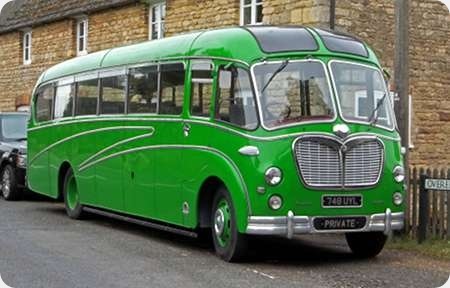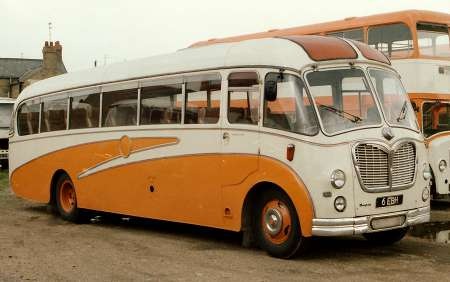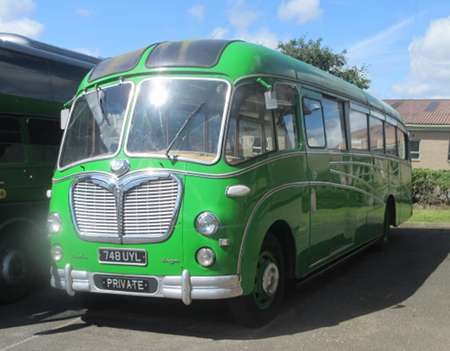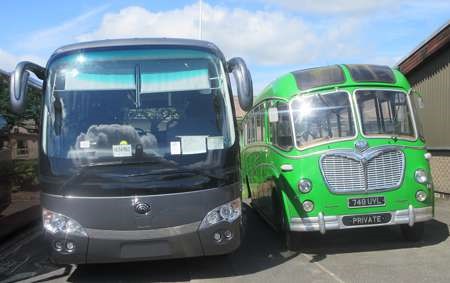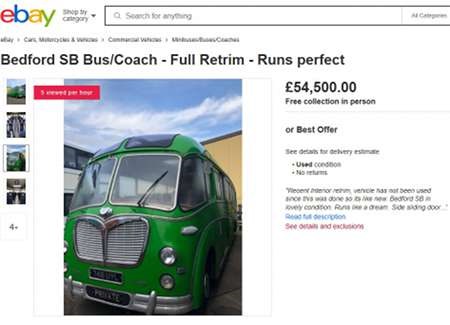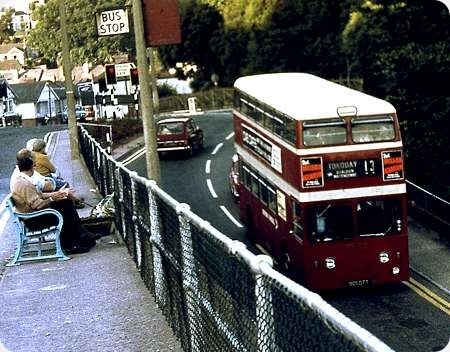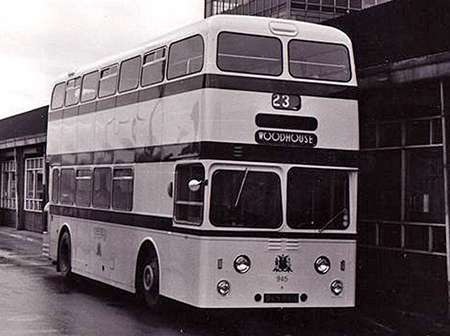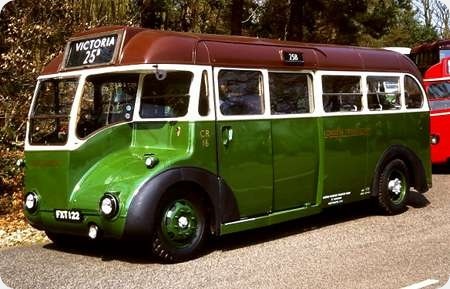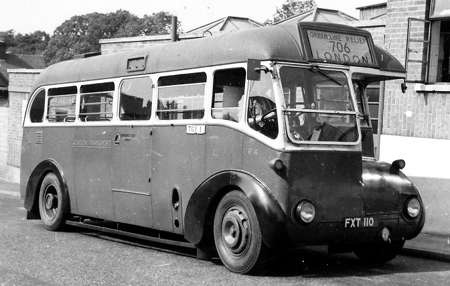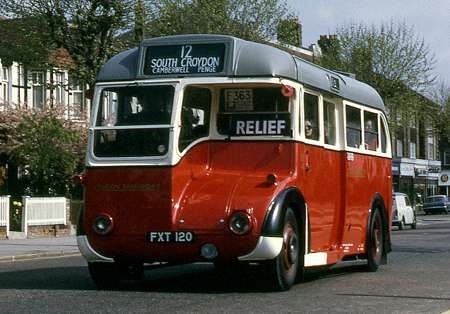Hills of Stockingford – Bedford SBG TUE 132 6 EBH 748 UYL
Hills of Stockingford
1955
Bedford SBG
Duple C41F
This is a Bedford SBG with a Duple C41F body that has a complicated history. It was first registered on 31 December 1955 as TUE 132, and, from 1 January 1956, went to Hills of Stockingford, near Nuneaton, Warwickshire. The vehicle, chassis number 41422, body number 1060/158, passed to Skills of Nottingham in October 1989. In July 1998 Skills swapped its registration, chassis and body numbers with another Duple bodied SBG registered 6 EBH, chassis number 62553 and body number 1090/150. The purpose of this exercise is perplexing. The former 6 EBH went to John Burton Coaches of Alfreton in June 1999 until scrapped early in 2001. It is unclear how this surviving SB acquired the number 748 UYL. Though originally an SBG (gasoline) example, it now possesses a diesel engine, type uncertain. It currently resides in the car park of a garden centre, “The Walled Garden at Elton Hall”, at the village of Elton in Huntingdonshire. Before this it spent its time parked on the side of the main road through the village, as seen in this picture. Internally, the body is completely gutted, though it does not appear that any active restoration is in progress.
I acknowledge the flickr site of John Wakefield as the source of this information.
Photograph and Copy contributed by Roger Cox
07/01/16 – 06:27
It acquired the ‘age related’ (748 UYL) when the previous owner transferred 6 EBH off onto his car. The current owner now looks to have changed his plans, its back on sale on the //www.carandclassic.co.uk for £24000 plus VAT Previous owner restored chassis & body exterior leaving the interior to be completed, the seats & interior were sold with coach so presumably in store somewhere.
John Wakefield
07/01/16 – 08:57
Thanks for filling in the last bits of the jigsaw, John. Having seen this Bedford languishing in Elton for some time, I decided to photograph it and send it to OBP to glean some information about it. I then discovered that your flikr site had already identified its unusual history.
Roger Cox
07/01/16 – 08:57
Out of interest, if Skill’s swapped the registration, body number, and chassis number, between the two coaches, how does it come to be known that an exchange of identity took place? Were there obvious differences between the two vehicles?
BLOTW gives the original 6 EBH as SB3 – was there any difference between the SBG and SB3 models or was it simply an updating of the code?
David Call
07/01/16 – 11:36
The change was recorded by PSVC & is common knowledge among enthusiasts. There is a difference in age of the vehicles 6 EBH is 1958 & TUE 132 1955. There are small detail differences in the bodies, the front indicator lights for one. TUE has the horizontal ‘tear drop’ type on front corners & 6 EBH had vertical ones set further back. 6 EBH had both windscreen wiper spindles at the bottom of windscreens, TUE 132 has the drivers side in the upper edge. Why Skills did the swop is unclear but presumably to get a nice ‘cherished’ number, I suppose as the vehicles were, to the untrained eye, virtually identical I don’t suppose anyone (including the ministry), noticed. I think by that time 6 EBH was in poor condition & TUE 132 was the better coach. Both the SBG & SB3 had the same 300 cu-in petrol engine, the SBG had a 17ft 2in wheelbase this was lengthened in 1955 to 18ft & became the SB1 (300 diesel) SB3 (300 petrol) or SB5 (330 diesel)
John Wakefield
07/01/16 – 17:08
The SBG (petrol)/SBO (Perkins R6 diesel)) designation continued after the lengthening of the wheelbase in 1955 to 18ft.6in., only becoming SB3 (petrol)/SB1 (Bedford 300 diesel)/SB8 (Leyland 0350 diesel) from 1957. In terms of Duple Super Vegas this occurred part way through the 1074-series of body numbers. The SB5 (Bedford 330 diesel) replaced the SB1 from late 1961, the change taking place during the production of the 1045-series Super Vega.
John Stringer
08/01/16 – 06:47
How legal was this swapping of plates and identity? In this day and age it would be called ‘a ringer’.
Stephen Howarth
08/01/16 – 12:08
Here is photo of the ‘real’ 6 EBH when with Canham of Whittlesey.
John Wakefield
15/03/16 – 05:44
Roger, any further news on 748 UYL, is it still at the garden centre at Elton? if so maybe you could take another pic.
John Wakefield
17/03/16 – 05:01
Yes, John, it’s still at the garden centre called The Walled Garden at Elton Hall. It hasn’t moved since my original posting in January, and no work on the interior seems to have been undertaken either. This picture was taken on 16 March.
Roger Cox
04/08/16 – 11:18
When I last looked at this Bedford very recently, no work had been done on its gutted interior. It has now gone from the Elton Hall car park.
Roger Cox
20/08/17 – 07:08
748 UYL was at East Coast Upholstery in Pickering on 16/7/17 when I took these photos, it was still there 13/8/17, still no seats, but must be having some fitted!
Michael Davies
01/11/17 – 07:19
I was searching for some sort of picture of this:
"Known vehicle: XBH 777 Bedford SBG 46298 1/56 , 5/63, 3/66 Duple C41F (1060/352). New to Jeffways Coaches, High Wycombe, Jeffways and Pilot Coaches, High Wycombe 5/60."
I was very kindly helped to do some research by several people, but a computer problem a year or two ago led to me losing their contact details and some of the explanations that they gave me!
Can someone please de-code the bit in quotes for me?? and tell me if this photo would be a good approximation of the vehicle referred to.
Joanna Wheatland
02/11/17 – 06:38
BH 777
Bedford
SBG Chassis type-SB Model G= Gasoline (i.e. Petrol engined).
46298 = Bedford Chassis number.
1/56 = Date new.
5/63, 3/66 not known.
Duple = Body manufacturer
C41F = 41 seater coach with a front entrance.
1060/352 = Duple body number.
David Hick
04/11/17 – 06:49
The answer to the last part of Joanna’s question is yes.
Peter Williamson
04/11/17 – 06:54
Re 748 UYL (TUE 132) I have recently spoken to Neil at Eastgate Coach Trimmers, Pickering (not East Coast Upholstery) he has now recovered the seats & has now to trim out the interior. I asked him who the owner was & he was reluctant to tell me, just that it was a private owner in Essex & he would pass on my contact details. Have heard no more.
John Wakefield
04/03/18 – 06:54
Apparently 748 UYL (TUE 132) is bound for New Zealand. It went from Pickering in early Feb into temp storage in the Peterborough area. The new owner (Brent Cooper) a New Zealand resident. It is not known what use Mr Cooper will make of the SB, possibly part of a vehicle collection. Current NZ Construction & Use regulations do not permit wooded bodied buses & coaches. Readers may remember the saga of OB JAB 867 that went to NZ in 2006 but had to be returned to UK after owner could not get it certified for PSV use. I dont suppose the number plate issue will be relevant to owner now, as it will have to have a new registration when it gets there.
John Wakefield
07/02/20 – 06:22
Coach for sale on ebay 6 Feb. 2020
Dennis Rolls
03/11/20 – 06:18
748 UYL has been spotted on land off the A40 junction with Hanger Lane, London, which had prior to Covid been used to park the fleet of Contiki Holidays.
John Wakefield
16/11/20 – 08:27
My son rode on this Bedford on Saturday 14th November on the E2 (Greenford-Brentford). Any info on why it was being used?
Niall Spencer
12/12/20 – 06:36
Niall Spencer. Are you sure it was this Bedford (748 UYL) that your son rode on? As far as I can see its been untaxed since 1/8/16 and in fact has an export marker showing on the DVLA listing!
Vehicle Details
Vehicle make BEDFORD
Date of first registration June 1958
Year of manufacture 1958
Cylinder capacity 99999 cc
CO2 emissions Not available
Fuel type PETROL
Euro status Not available
Real Driving Emissions (RDE) Not available
Export marker Yes
Vehicle status Untaxed
Vehicle colour GREEN
Vehicle type approval Not available
Wheelplan NOT RECORDED
Revenue weight Not available
Date of last V5C (logbook) issued 21 August 2015
John Wakefield
14/12/20 – 07:11
I believe it was this one, as he texted me the reg, knowing I have an interest in buses and coaches. He also said it was an old streamlined green Bedford.
Niall Spencer
15/12/20 – 06:54
Niall I find this very odd, not only is the coach not taxed (all be it free), but it has ‘officially’ been exported. further more it is not insured according to ASKMID! Whilst I am not familiar with the E2 Greenford – Brentford service I find it strange that TfL would allow an old 1955 coach to operate illegally on one of their routes. Had it have done so I am sure someone would have taken a pic and posted it on Facebook etc. Did your son get a photo?
John Wakefield
16/12/20 – 10:55
This isn’t part of the current discussion, but the original picture makes me think of the Matchbox series Bedford SB coach produced in the 1950’s/60’s. I think it was their No.21. The green colour is an almost perfect match. I had eleven of them in my "fleet", along with the double deckers and trolleybuses from their series. Some survive with in the grand childrens’ box of items. Goodness me, these toys are as old as the real one above!
Michael Hampton
17/12/20 – 11:55
Unfortunately he was on his way to work, as a BTP Police Officer, so was unable to get a pic. He did mention it was a bit of a shock when it stopped at his bus stop and he had to ask if it was the E2. There was a person onboard collecting contactless payments.
This is becoming a very interesting occurrence.
Niall Spencer
21/12/20 – 06:59
Niall I have since been in touch with the owner of 748UYL and it was certainly not the vehicle that your son saw on the E2. As I suspected the Bedford has not been on the road! So looks like mistaken identity.
John Wakefield
21/12/20 – 11:38
At least we have got to the bottom of it.
Will question him next time I can see him.
Niall Spencer
Quick links to the - Comments Page - Contact Page - Home Page
